As found on Youtube. Featuring the IBM 3663 Supermarket Terminal.
And here’s a brochure on the IBM 3660 Supermarket System, as found on archive.org.
Musings about our first generation of electronic point of sale equipment

As found on Youtube. Featuring the IBM 3663 Supermarket Terminal.
And here’s a brochure on the IBM 3660 Supermarket System, as found on archive.org.
I often do searches online for various legacy point of sale systems, including the NCR 255 and IBM 3680 systems. I stumbled across this narrative from computer.rip, which echoes a lot of my feelings of where we’re going with point of sale equipment today (toward unsuitable iPad and similar equipment). Computers are trending toward an “one size fits all” paradigm, when that’s always not the most efficient approach.
I found this an interesting read. I hope you do as well.
Continuing from last week’s post, here’s some more documentation from the RSPA’s (Retail Solutions Providers Association) 75th anniversary celebration during their RetailNOW convention earlier this summer.
Here’s the documentation featuring the Data Terminal Systems Series 200 cash registers. I remember seeing these registers in the wild; a local gas station used it as their primary machine for their service station. I was fascinated by the dot-matrix printer and thought of it as more technically advanced that the EP-101 impact printers in the Series 300 and 400 machines. The 200 machines were quite capable as standalone registers. I remember a bargain grocery store chain using these machines in their six checkout lane setup.
I was interested to see the Series 200 registers being compatible with DTS’s external slip printer.
DTS-Series-200You can download the file (right-click and save) here.
The Retail Solutions Providers Association (RSPA) is celebrating the 75th anniversary this year and at their recent RetailNOW gathering, featured an exhibit of technology in the point of sale space over the years.
In addition to the vintage equipment on display (shown in previous blog entry photos), they’ve also put together an impressive library of vintage brochures and other documentation from over the years. With their permission, I’ll be sharing some of these pieces here on the site.
For more information on the RSPA, check out their website at https://gorspa.org.
Up first, sales brochures around the DTS Series 400 line of cash registers. There’s several different models and use cases shown in these brochures.
Some features available in the Series 400 included Interregister Communications, ANS-R-TRAN (allowing for host computers and the cash registers to communicate data back and forth), change dispensing interfaces compatible with NCR change dispensers, dot matrix remote slip printers, real time clock, and multiple cash drawer options.
I’m still on the lookout for operating, programming, and technical manuals for all of these machines. I’m also looking for old receipts generated from these machines as well.
DTS-Series-400 DTS-400B-We-understand-the-World-of-Food-Service-and-Hospitality DTS-Model-400B-for-restaurants DTS-Series-440 DTS-440-Series-we-understand-productivity-begins-at-the-checkoutAn archive video explaining how the National Semiconductor Datachecker scanning system, and more importantly, UPC scanning in general, worked when new in 1974.
The cash register has the same design as other Datachecker registers of the era, just with an alphanumeric display along the top. I remember a variation used by the Tops chain back then, but they had numeric segmented displays in the main register housing, instead of a separate display along the top.
The dot matrix printer and receipt format are pretty much the same as used by later NS/Datachecker systems in the late 1980s.
The video lives here:
https://diva.sfsu.edu/collections/sfbatv/bundles/229145
Here’s some photos of the non scanning variation.
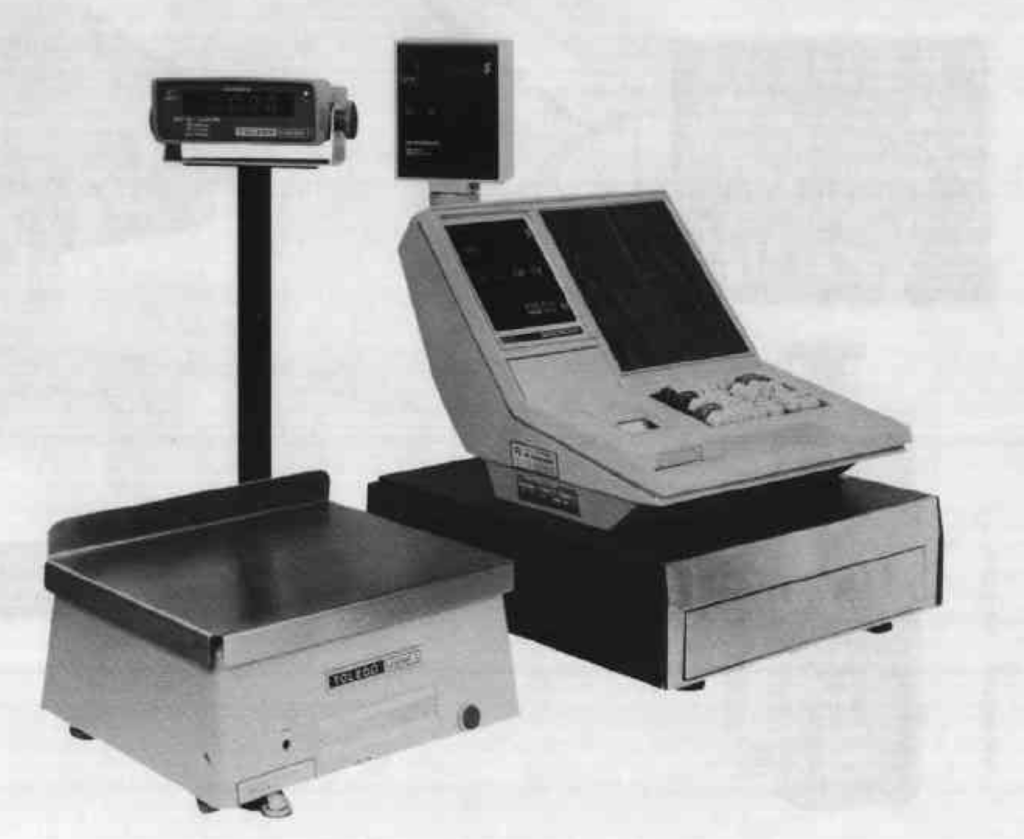
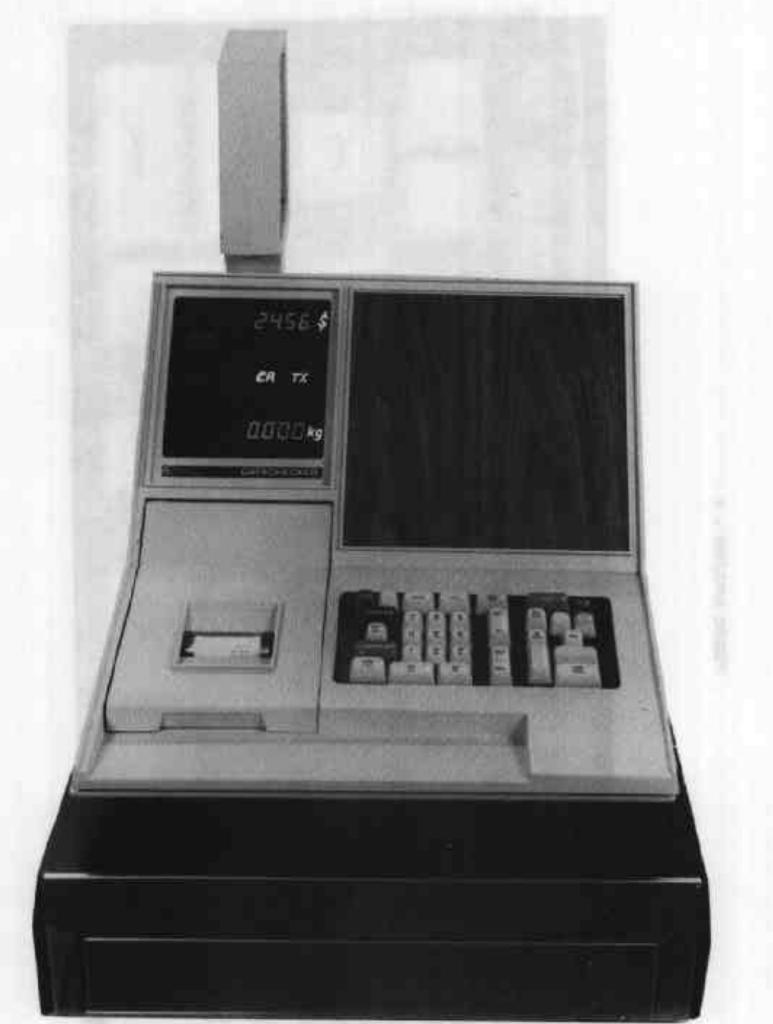
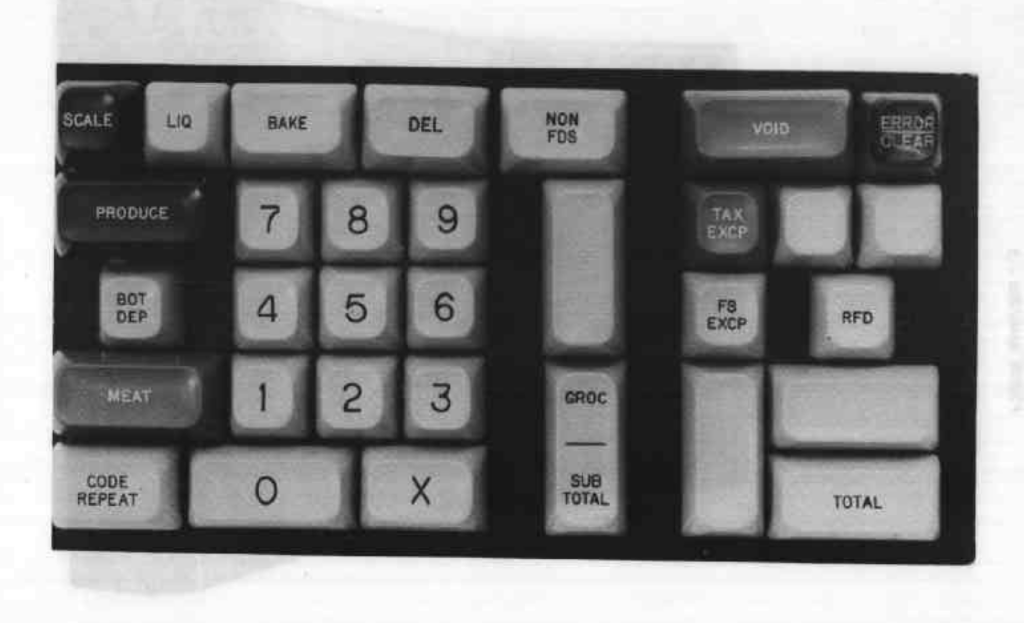
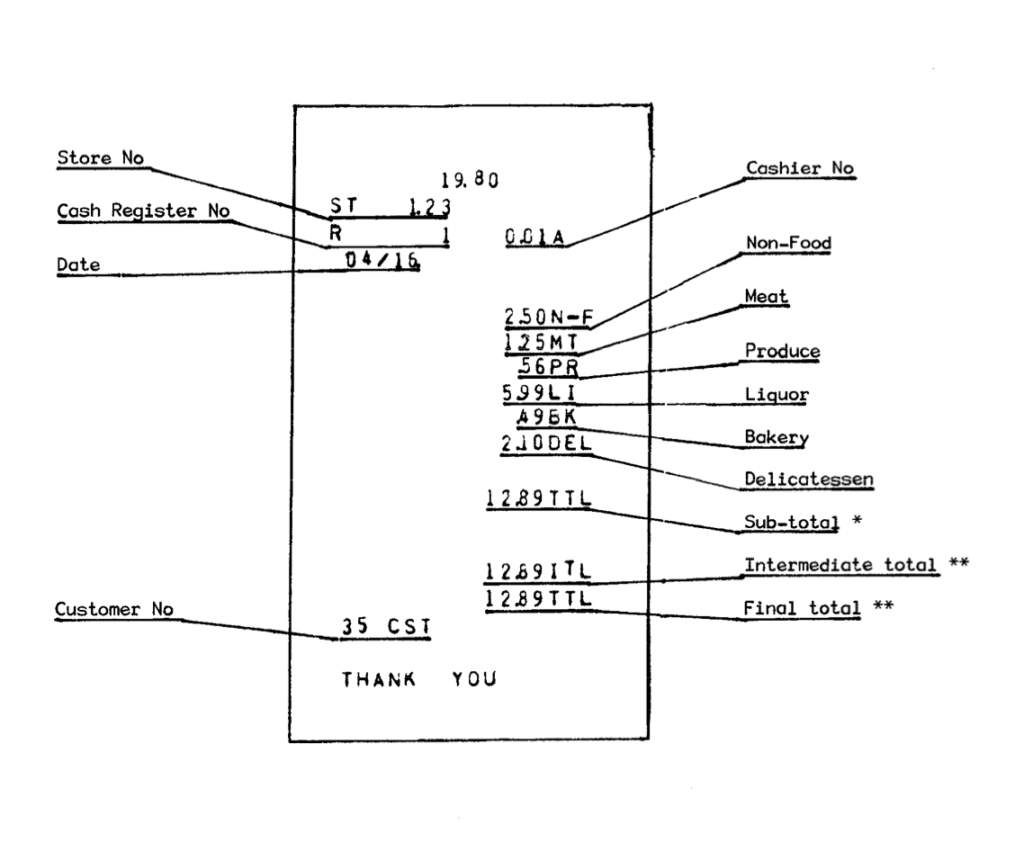
It’s no secret that I’m a big fan of the Data Terminal Systems (DTS) cash registers from back in the day. At one point I had two DTS Model 150s in my collection, but after they gave up the ghost I decided to donate them to another retro computing enthusiast.
The Retail Solutions Providers Association (RSPA) recently celebrated their 75th anniversary at their RetailNOW convention. I’ll be posting some of the vintage documentation highlighted at their event. After spotting (and sharing) the photographed DTS Model 319 in the previous post, I did some research and was able to reach out to some folks in the industry.
Here we have a DTS Model 440 that was featured at the RSPA event, as photographed by Dave McCarthy of DUMAC Business Systems in Syracuse, New York. This particular register was either refurbished or built to original specs after National Semiconductor purchased Data Terminal Systems and started incorporating the DTS designs into their Datachecker line.
The keyboard layout is mostly familiar to me; the only differences I can spot is “LOG SBTL” in what I knew as the “DEPT NR” location and the “@/SBTL” button replaced by a simple “@” key. This was just a difference in configuration for whatever retail chain used this particular register. I know on the Model 440 I was able to play around with back in my teens, pressing ACCT NR would log the current subtotal on the receipt and journal tapes.
As a native of Upstate New York, a couple of grocery store chains, including P&C Foods and some Great American locations, used these registers as their first ECRs. Fays Drugs also used a variant.
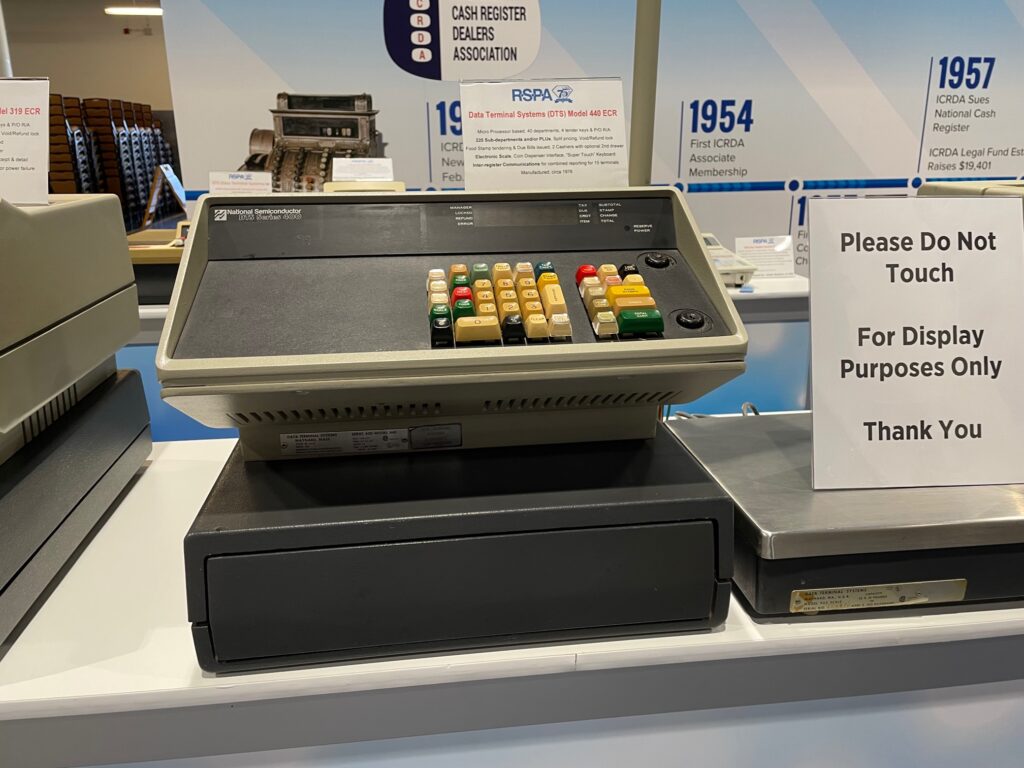
I’ve been running across a few new photos and some documentation around Data Terminal Systems cash registers lately. I’ll be reaching out to a source to make sure they’re good with me reposting the information here. In the meanwhile, here’s a photo of a Data Terminal Systems Model 319 electronic cash register. I found the photo on Linked In.
I remember this exact configuration of DTS equipment at a local grocery store back in the day. I also remember a variation in use at the Carls Drugs drugstore chain in Upstate New York. Those registers were in use right up until the chain was sold to Fay’s Drugs (and Fay’s put in their DTS Series 400 registers). AMT TEND in the upper left hand corner is a vivid memory, also I believe the display would fill with leading zeroes when the sub total is displayed (1.09 would be represented as 0001.09).
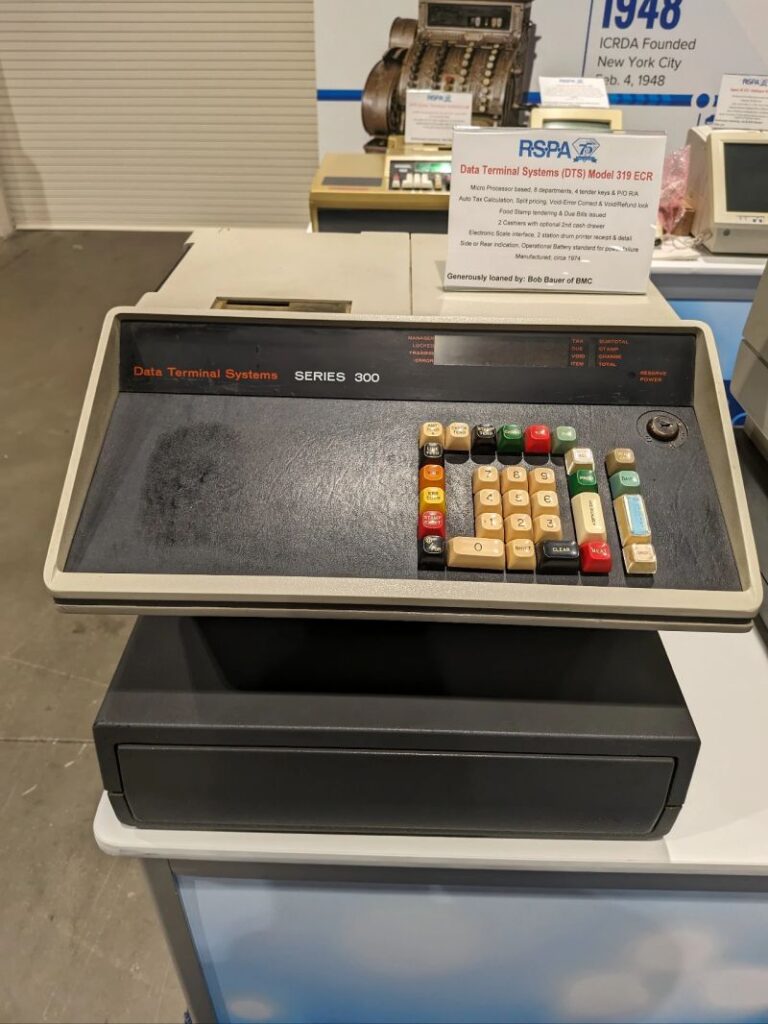
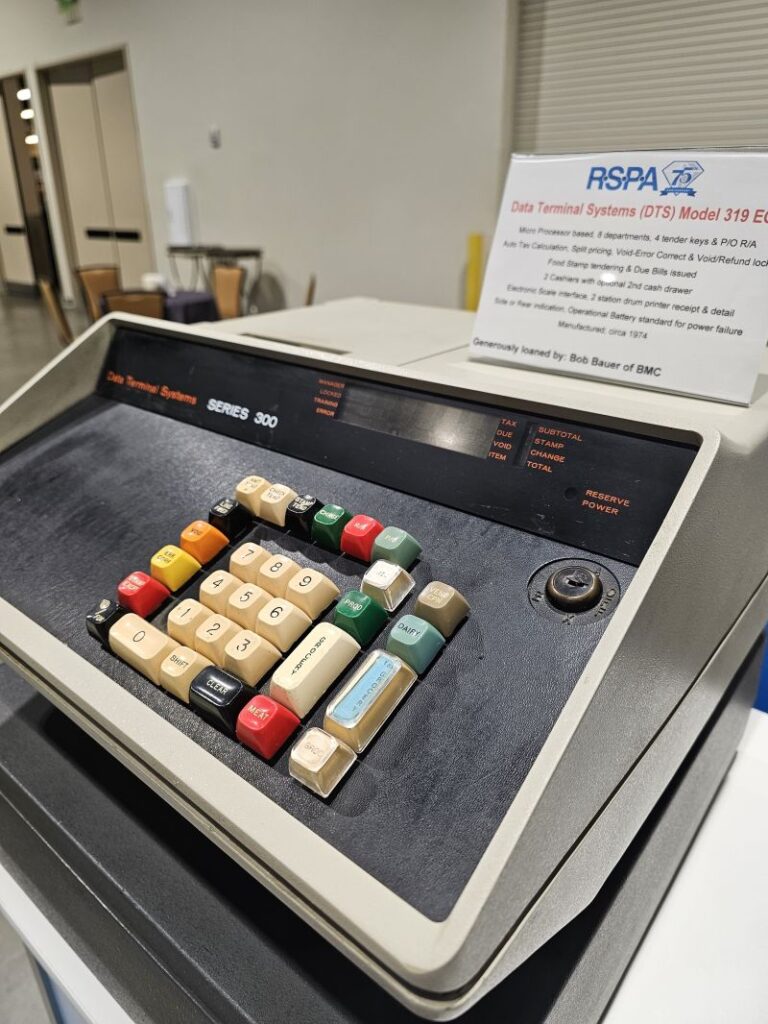
I found this video on YouTube, it’s a “B” roll of news footage from a Target in Minnesota. Filmed in 1986, the first few minutes of the video feature the checkout area. This particular store was using IBM 3653 cash registers, assumedly in production for several years at this point. Target was using a mix of technology in the mid 1980s; newer stores used IBM 3683 cash registers at the time.
Watching the operator guidance panel when the cashier starts a new transaction. I’m assuming the user is cashier #16, then enters a “1” for “Cash Sale”, and then enters six digit SKUs and the price of each item.
YouTube contributor Vampire Robot has posted quite a few B-roll videos from retail establishments back in the day to their channel. Here’s a bunch of footage from a Sears store in 1991, complete with mostly NCR 2152 registers and their rattling printers. I’ve always known Sears to go from the Singer-Friden system to NCR 2152s to the CompuAdd registers to the current IBM SurePOS system in use today in their remaining stores. Apparently some Sears stores had NCR 7052 registers as well and I’ve had folks tell me of some Sears running with IBM 4683s. I need to do more research of their practices during the 80s and beyond, but at least for now we can enjoy the NCR key beeps and rattling printers.
I never thought I’d see the day that vintage receipts would be up for auction on ebay, but it’s becoming fairly common. I should have kept some journal tapes from back in the day, I could have made a lot of money!
Here we have a bunch of receipts and price tags from 1983 as featured in an ebay auction. I found all of these interesting.
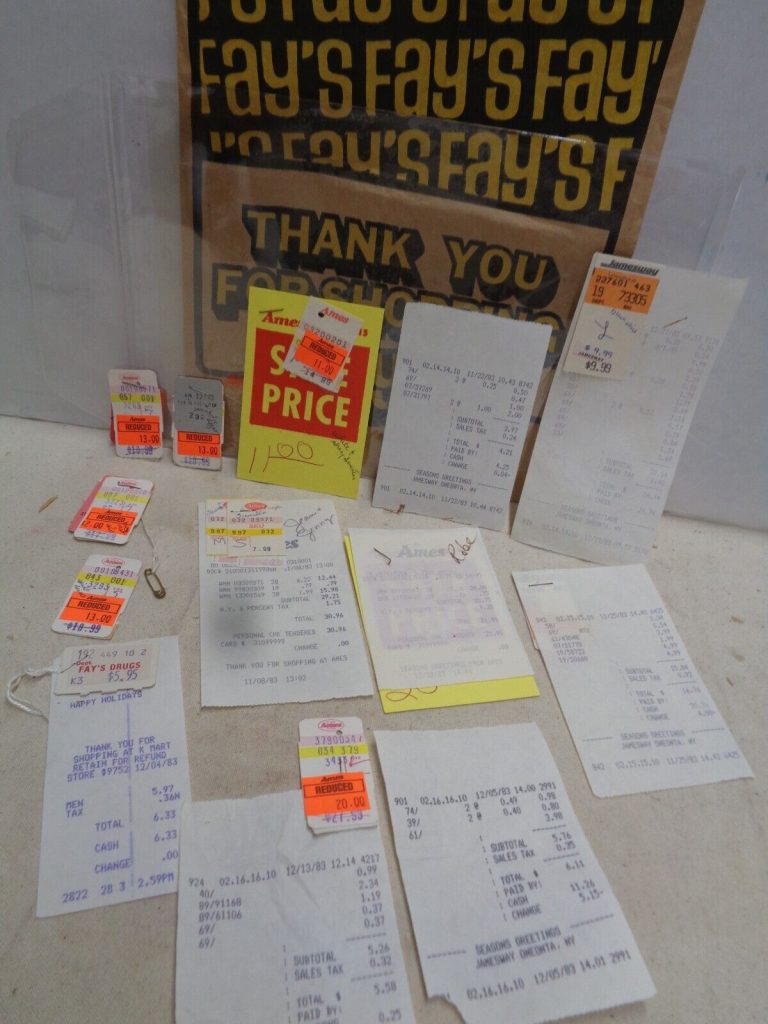
The Kmart receipt was generated by an NCR 2552 cash register. Personally I’d never seen an NCR 2552 cash register at Kmart back in the day, but NCR was a prominent vendor for the chain and back then they had many different cash register systems in their stores. The NCR 2552 (presumably hanging off an NCR 726 minicomputer in the back) was running the standard NCR software, and the receipt formatting is identical to Hills, Zayre, Bradlees, and the grocery chains using the same equipment at the time.
The Ames receipts are all generated by IBM 3683s, from IBM’s Programmable Store System (which later became General Sales Application). Ames had standardized on the system in the early 1980s, and the price tags are from two simultaneous conversion periods: the Big N chain was being incorporated into the Ames brand and the IBM conversion from mechanical registers was still taking place. The price tags have two data entry points: the first line being the eight digit SKU used by the IBM system, the second line being “two pass” entries for the mechanical cash registers that punched optical tape. Look close and you’ll see the first three digits of the top line matches the last two digits of the second line, and digits 5-7 on the top line match the first three digits of the second line. The last line of the eight digit SKU is a Modulus 10 checksum digit. At the time Ames had changed their slogan from “The savings are amazing at Ames” to “The savings are amazing at Ames-Big N”, but I never saw this on a receipt.
The Jamesway receipts are also generated by IBM 3683s, but I could never figure out what software Jamesway was running at the time. It was always my understanding that prior to the IBM 4680 system (in the mid-late 1980s), IBM wouldn’t sell their equipment without selling the complete package of cash registers, back end computers, and the software to run it all. But the formatting and “transaction language”, as I like to call it, on the receipt resembles nothing that comes from the IBM Programmable Store System found at other stores. There is some resemblance to receipts from Waldenbooks B. Dalton Bookstores of the era, so I’ll probably go down that path trying to figure out what other software packages were available for the IBM systems in the early 1980s.
Though no receipts are included, there’s also a price tag for Fay’s Drug Store, which was a popular chain in Upstate New York. At the time, many Fay’s stores were running Data Terminal Systems Series 400 cash registers. They used a two-digit department numbering system, which would be entered prior to the price entry on the register. A typical entry on the 44mm wide receipt (EP-101 impact printer) was two lines, for example:
19DP#
5.95TA… where “TA” standard for “Tax Applicable”. I can’t remember if non taxable items were “NT” or “TN” (using the same T on that printer position).